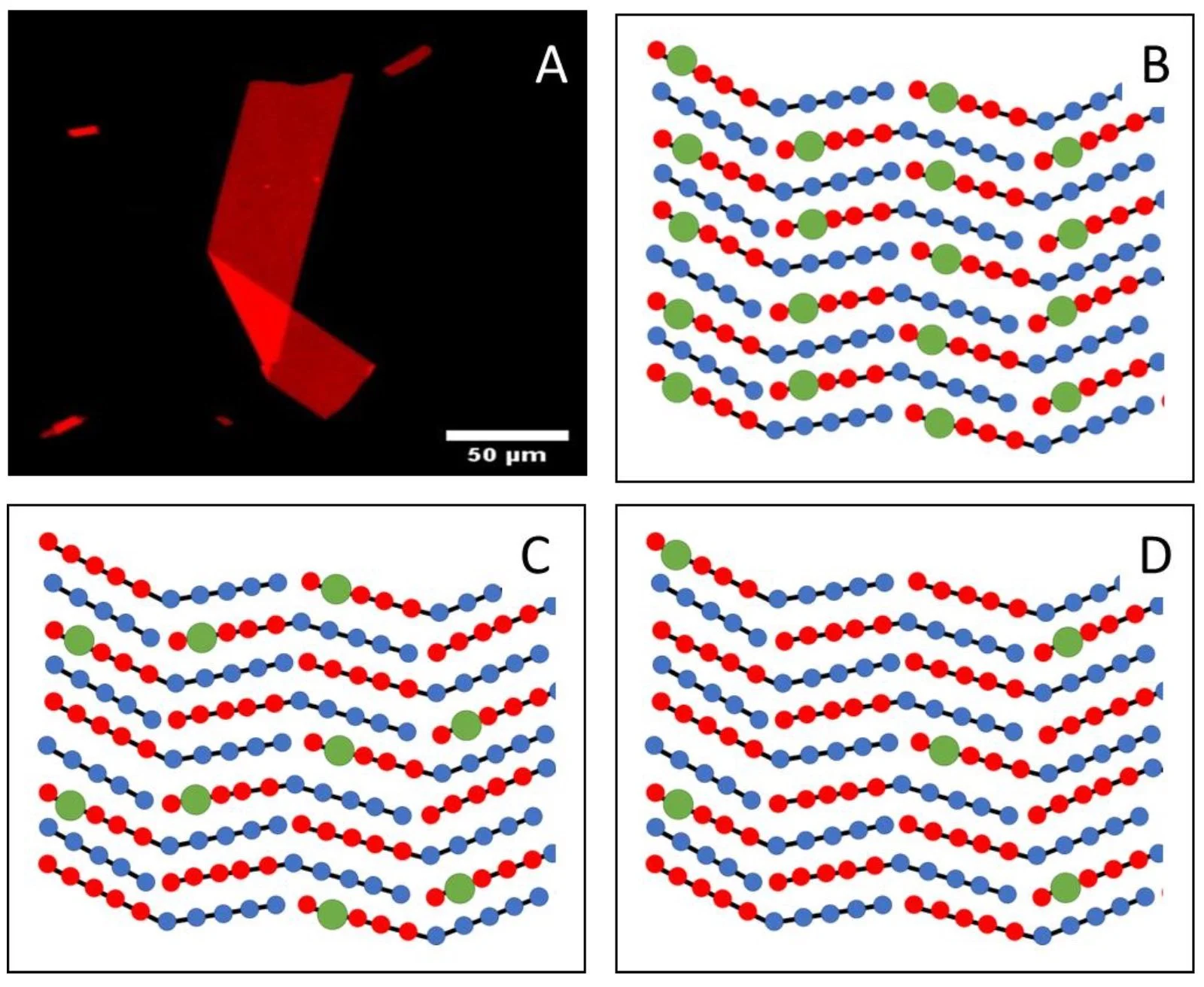Peptoid Nanosheet as a functional scaffold (Nile Red stained) — green dots in schematics indicate coupling sites possible by controlling assembly design.
Spatial definition of chemical groups with peptoids
Molecular components in nature are spatially organized and compartmentalized to generate function. Convenient and versatile synthetic material platforms to perform analogous functions are lacking. The Lau Lab specializes in synthetically convenient peptoids, surface functionalization, and nanopores arrayed in nanoporous alumina membranes to fill this niche.
Peptoids are synthetically convenient, sequence-specific polymers (see Peptoids page), and are ideally suited for constructing molecular scaffolds with unit spacing corresponding to the single peptoid residue (0.34 nm). Peptoid sequences may therefore be used to arrange molecular functionality on a scale too small for nanolithography and much longer than conventional synthetic molecules (on the order of 1~10 nm).
Nanopores are simply defined by their diameters and lengths but their straightforward geometry may already be used to organize molecular components for advanced function. A prime example is the nuclear pore complex (NPC). NPCs’ multiple 50~100 nm ring-like nucleoporin protein scaffolds, lined with natively unfolded polypeptide sequences, regulate all nucleocytoplasmic protein and RNA transport. Inspired by these biological pores, the Lau Lab functionalize nanoporous alumina membranes, produced by an inexpensive self-organized anodization process, with soft matter to control the surface chemistry of these nanopores and consequently the diffusion of macromolecules through them. These artificially gated nanopores will enable chemically specific molecular separation and enhance our mechanistic understanding of NPCs.

